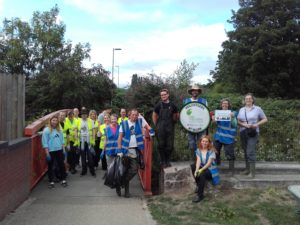
The latest iCASP Project will help advise the Don Catchment Rivers Trust on their Hidden Heritage Secret Streams project. This is based on the Upper Rother Catchment, a tributary of the River Don. One of the aims of the project is to improve the way land is managed so that it provides both social and heritage benefits.
Volunteers will be recruited to put in place small and simple changes to reduce river pollution from different sources, slow the rate at which water flows down the river, and make it easier for different species to flourish by ensuring suitable habitats are connected up in the landscape.
At the moment, it’s difficult to prioritise what should be done because there isn’t enough available information on the different options and whether they can be carried out by volunteers. This is where iCASP can add most value.
The iCASP project, led by Professor Lorraine Maltby at the University of Sheffield, with the Don Catchment Rivers Trust, will focus on collating available open source data. This will be used to produce hotspot maps of the current catchment issues related to diffuse pollution, flooding and ecological connectivity. These maps, along with expert advice from the academic team, will be used to prioritise the land management options and produce opportunity maps within the Upper Rother Catchment. The team will also produce a monitoring proposal that could be used to evaluate the effectiveness of the options used. During the project, criteria will be produced to assess what options are feasible for volunteers to implement and what options would require specialist training. The outcomes of the project will be hosted by the Don Catchment Rivers Trust and made available for other stakeholders in the Upper Rother Catchment.
This project will apply academic knowledge to help improve the land management of the Upper Rother Catchment using the experience of several researchers who have diverse backgrounds in: ecological / riparian habitat quality; ecological connectivity; farmland interventions for improving water quality and reducing flood risk; impacts of landscape management on water quality; and natural flood management.
